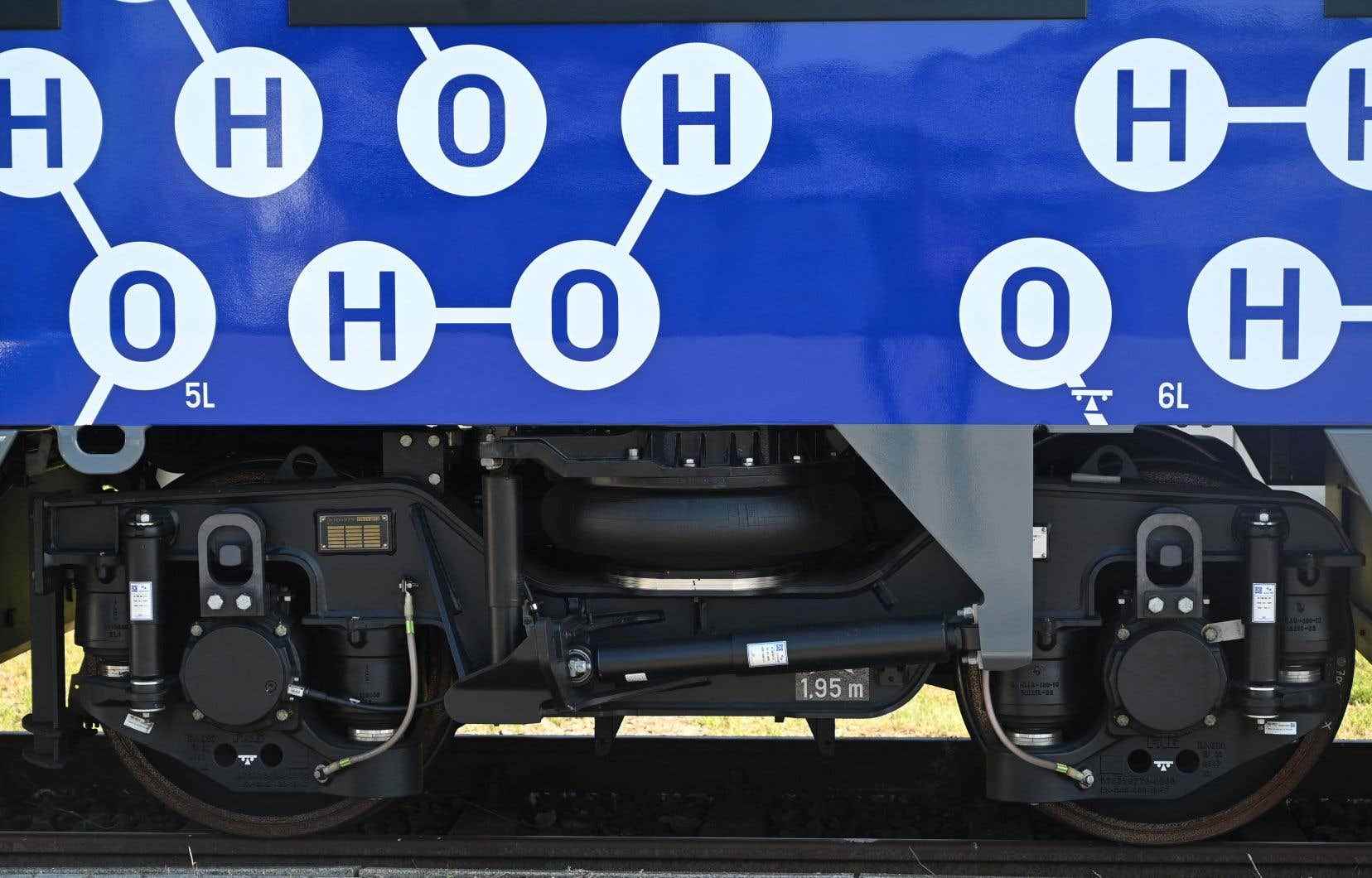No more diesel locomotives: Germany inaugurated the world’s first railway line running entirely on hydrogen on Wednesday, a major step forward for the decarbonisation of rail, despite the supply challenges posed by this innovative technology.
The fleet of fourteen trains, supplied by the French group Alstom to the region of Lower Saxony (North), now runs on the hundred kilometers of the line connecting the cities of Cuxhaven, Bremerhaven, Bremervörde and Buxtehude, not far from Hamburg.
“We are very proud to be able to bring this technology to commercial use, as part of a world first,” said Alstom CEO Henri Poupart-Lafarge on Wednesday.
Designed in France, in Tarbes (South-West), and assembled in Salzgitter (centre) in Germany, Alstom’s hydrogen trains – called Coradia iLint – are pioneers in the field.
This technology is the preferred way to reduce CO2 emissions and replace diesel, which still powers 20% of rail journeys in Germany.
The new fleet, which cost “93 million euros”, will avoid generating “4,400 tonnes of CO2 each year”, according to the LNVG, the regional operator of the network.
Orders
Commercial trials have been carried out since 2018 on this line with the regular circulation of two hydrogen trains.
Other rail links will follow: Alstom has signed four contracts for several dozen trains, in Germany, France and Italy, and does not see demand weakening.
In Germany alone “between 2,500 and 3,000 diesel trains could be replaced by hydrogen,” said Stefan Schrank, project manager at Alstom, to AFP.
“By 2035, around 15 to 20% of the regional European market could run on hydrogen,” confirms Alexandre Charpentier, rail expert at Roland Berger, to AFP.
Hydrogen trains are particularly relevant for small regional lines, where the cost of a transition to electric is too high compared to the profitability of the link.
They mix hydrogen on board with oxygen present in the ambient air, thanks to a fuel cell installed in the roof. This produces the electricity needed to pull the train.
Currently, around one out of two regional trains in Europe runs on diesel.
Alstom’s competitors have also entered the race. The German Siemens unveiled a prototype train with Deutsche Bahn last May, with a view to commissioning from 2024.
But, despite these attractive prospects, “there are real barriers,” says the expert.
Because the trains are not the only ones to be thirsty for hydrogen. The entire transport sector, road or air, but also heavy industry, in particular steel and chemicals, rely on this technology to reduce their CO2 emissions.
Resource still rare
Even if Germany announced in 2020 an ambitious plan of seven billion euros to become a leader in hydrogen technologies within a decade, the infrastructures are still lacking in the country – as in all of Europe – whether for the production or transport, and require colossal investments.
“For this reason, we do not see a 100% replacement of diesel trains by hydrogen”, according to Mr. Charpentier.
Furthermore, hydrogen is not necessarily carbon-free: only “green hydrogen”, produced using renewable energies, is considered sustainable by experts.
Other manufacturing methods exist, much more common, but they emit greenhouse gases because they are made from fossil fuels.
Proof that the resource is lacking: the Lower Saxony line should, initially, use hydrogen by-product of certain industries, such as chemicals.
According to the French research institute IFP, which specializes in energy issues, hydrogen is currently “95% derived from the transformation of fossil fuels, almost half of which from natural gas”.
However, Europe is already facing tensions over its supply of Russian natural gas, against the backdrop of a showdown with Moscow over the war in Ukraine.
“Political decisions will have to prioritize which sector the production of hydrogen will or will not go to,” said Mr. Charpentier.
Germany will also have to buy the resource abroad to meet its needs. Berlin on Tuesday signed an agreement with Toronto to massively import renewable hydrogen produced in Canada from 2025.
